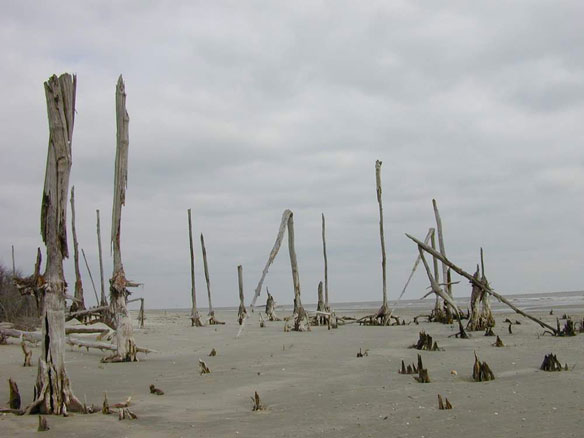
Boneyard Beach, Bull Island, South Carolina. Here, hundreds of oaks, cedars and pines are strewn along a three mile stretch of beach on the northeast corner of the island; all the result of an ever-changing beach in constant battle with the in-coming surf. Bull Island, at 5000 acres, is the largest of four barrier islands found within the Cape Romain NWR. Captions: USWFS Photo source: ©© Hunter Desportes
Excerpts;
Bare trunks of dead coastal forests are being discovered up and down the mid-Atlantic coastline, killed by the advance of rising seas. The “ghost forests,” as scientists call them, offer eerie evidence of some of the world’s fastest rates of sea level rise…
Read Full Article, Climate Central (09-15-2016)
A Giant Brought to Its Knees: The Atlantic Coastal Forest
The Atlantic Forest is a shadow of its former self. Originally covering more than 386,000 sq. miles along Brazil’s coast, extending into eastern Paraguay and northeastern Argentina. Today less than 7% of that cover remains, in the wake of centuries of forest clearing for agriculture and urban development, and fragmented by centuries of unsustainable use and logging…
The Sumatran rainforest will mostly disappear within 20 years (05-26-2013)
Haiti’s Unnatural Floods
The nearly complete deforestation of Haiti has caused countless problems for the country, the people, and its biodiversity…
Queensland’s mangrove ecosystem dying in secret, Brisbane Times (05-20-2016)
Saving Fiji’s Coral Reefs Linked to Forest Conservation Upstream, Wildlife Conservation Society (12-18-2013)
The health of coral reefs offshore depend on the protection of forests near the sea, according to a new study by the Wildlife Conservation Society that outlines the importance of terrestrial protected areas to coastal biodiversity…









